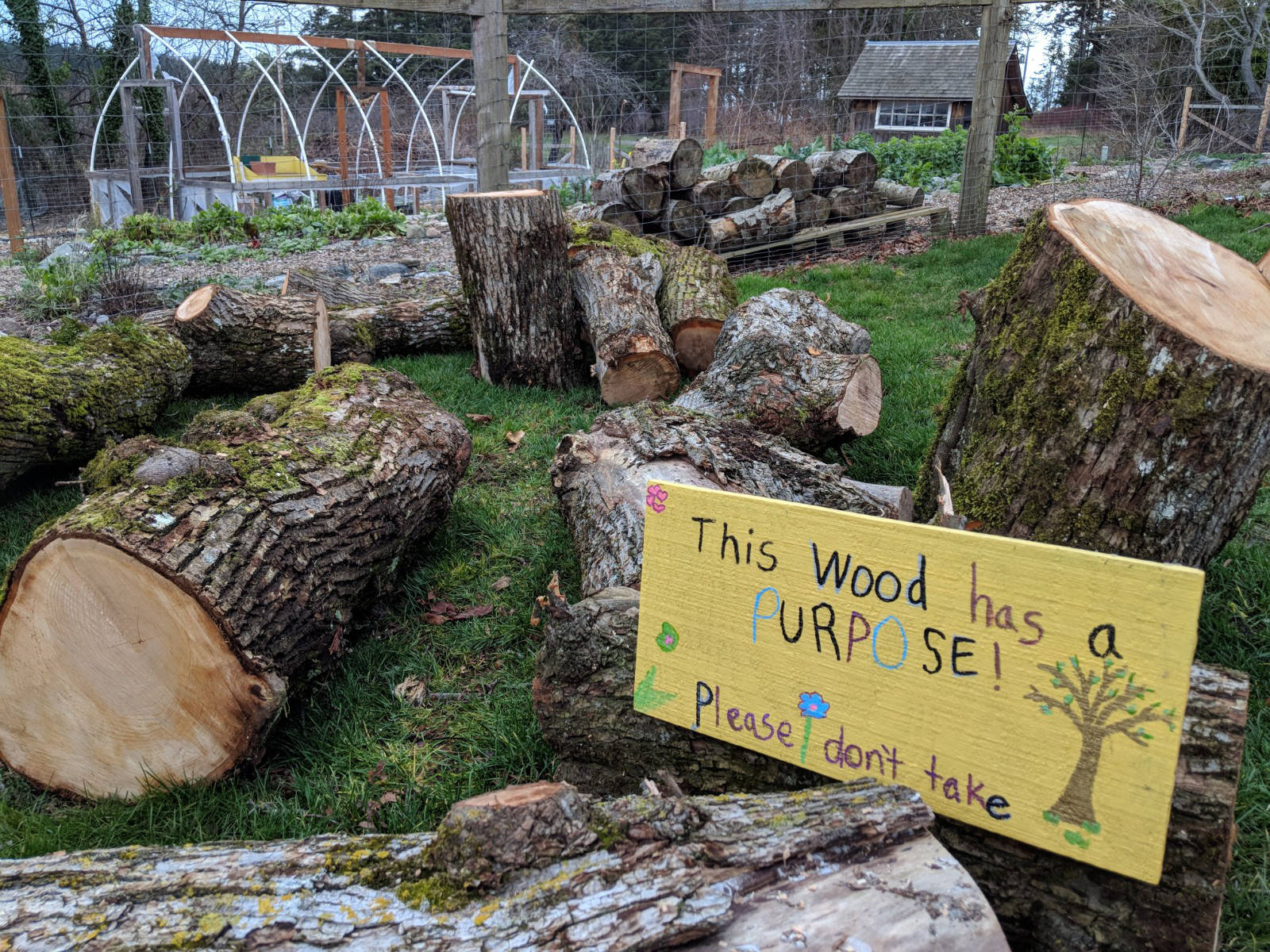They call her the Grandmother Tree.
For more than a century, island children have climbed her branches, leaned against her trunk and studied beneath her canopy.
Now, the beloved maple in front of Orcas Elementary is receiving expert care to ensure her life continues for generations to come.
“It’s time to not continue to take from the tree but to give back,” said teacher Mandy Randolph, who began the process of tending to the bigleaf maple 10 years ago when it first began showing signs of aging.
The deciduous bigleaf maple (acer macrophyllum) can live up to 300 years if conditions are perfect, which means a forested area with no activity and plenty of nutrients falling to the ground for small, fine roots to gather and carry to the rest of the plant.
For the Orcas School tree, it has withstood the hustle and bustle of students for its 115 years of life, which is not ideal for long-term health. For decades, all school photos were taken there, and children loved to climb the tree’s long, thick branches.
“It was a high-traffic area; it was the place to be,” said Randolph.
In 2010, the maple lost multiple limbs over the winter season. Randolph began working with a variety of local arborists, and one of the first steps was removing a bench that encircled its base that was causing soil compaction. In addition, kids were prohibited from climbing the tree because they were rubbing bark off its trunk and snapping off new branch sprouts.
When there was talk from school administration about cutting the tree down, kids and teachers reacted very strongly in opposition, and the idea was abandoned. Randolph says Superintendent Eric Webb is committed to preserving it.
“I’m very grateful to the current administration for taking care of the tree,” she said.
Randolph feels a deep connection with the maple. She grew up on Orcas, and as a teacher with her own children – one of whom is now grown – she’s watched it become part of their upbringing. As the K-5 farm-to-classroom instructor, Randolph also uses the tree in her curriculum. She puts carpet squares on the ground for kids to sit on, and sometimes they lie under the canopy and observe what is happening in the branches. It was during one of these sessions last year that students noticed a proliferation of “helicopter seeds,” the winged pods that maples produce. When there are too many that turn brown and remain on the branches, it’s an indication of stunted growth.
In the spring of 2018, Rain Shadow Consulting became involved. Owner Carsen Sprenger and foreman Colin Blevins assessed the maple – which was 45 feet tall and 6 feet in diameter – and concluded it had fungal disease, root compaction and a 50-foot-wide spreading canopy.
“Decline moves from the end of the tree limbs back in,” Blevins said.
This fall, Sprenger met with Randolph and her students to discuss how they can support the health of the maple. They spread wood chips around the base to provide nutrients and lessen the impact of footsteps on fine roots. Rainshadow staff put down a mulch treatment at the base and established a “root protection zone” where no one can walk. In addition, students rake up the tree’s leaves to spread around the base for nourishment.
“We read ‘The Giving Tree’ by Shel Silverstein, and it’s an important lesson for the kids about not taking from the tree but giving back to it,” Randolph said.
In January of this year, Blevins and his crew cut back a large portion of the tree’s canopy.
“It was getting to the point where what we did would have to be drastic,” he said. “We’re basically growing the tree down. Bigleaf maples are really good at re-sprouting.”
Randolph saved all the wood and is looking for artisans and woodworkers who could help turn it into shelves, signs or any item that will honor the tree. She can be reached at mrandolph@orcas.k12.wa.us. Her mom Vicki Bartram took some of the smaller branches and sliced them into medallions, which each child got to take home.
The maple will begin showing growth this spring, and the arborists will then select which new branches to retain. The goal is a smaller specimen with a more stable and condensed canopy.
“We are expecting decades more out of the tree,” Blevins said.



